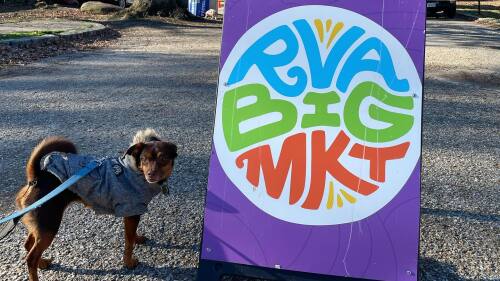A stroll along the Riverfront Canal Walk is steeped in history. But hey, what in Richmond isn’t? Reader John S. reached out to us to ask about the history of canals in Richmond, and we dove in.
The story starts with George Washington in the late 18th century. In those days, opening + controlling waterways was key to becoming an economic power, because that was where commerce was conducted. Washington saw canals as an opportunity to connect the Atlantic Ocean with the Ohio River through the James and Kanawha Rivers.
Construction began in 1785, when VA incorporated the James River Company and named Washington honorary president. Most of the physical labor was done by enslaved laborers, who also worked aboard boats and as headmen once the canal opened.
Pro tip: you may recognize the statue of “The Headman'' on Brown’s Island. It is a monument to the African American boatmen who navigated the river + canals.
The canal was operational, although not complete, from 1821-1877. Traffic peaked in 1860, when as many as 195 boats traversed the waters on a regular basis. Most boats carried raw materials from western VA and finished goods back from the city. There were also a small number of passenger boats.
Business along the canal slowed due to flooding and damage sustained during the Civil War, made worse after Confederate soldiers set fire to the city in 1865.
Competition had also emerged in the form of the railroad. By 1880, the Richmond and Allegheny Railroad had begun to lay tracks alongside the canal.
The James River and Kanawha Canal Historic District was listed on the National Register of Historic Places in 1971. In the 1990s, the city started restoring parts of the canal to aid in revitalization efforts on the waterfront.
Itching to explore? Head to an access point between 5th and 17th Streets to take in history.












